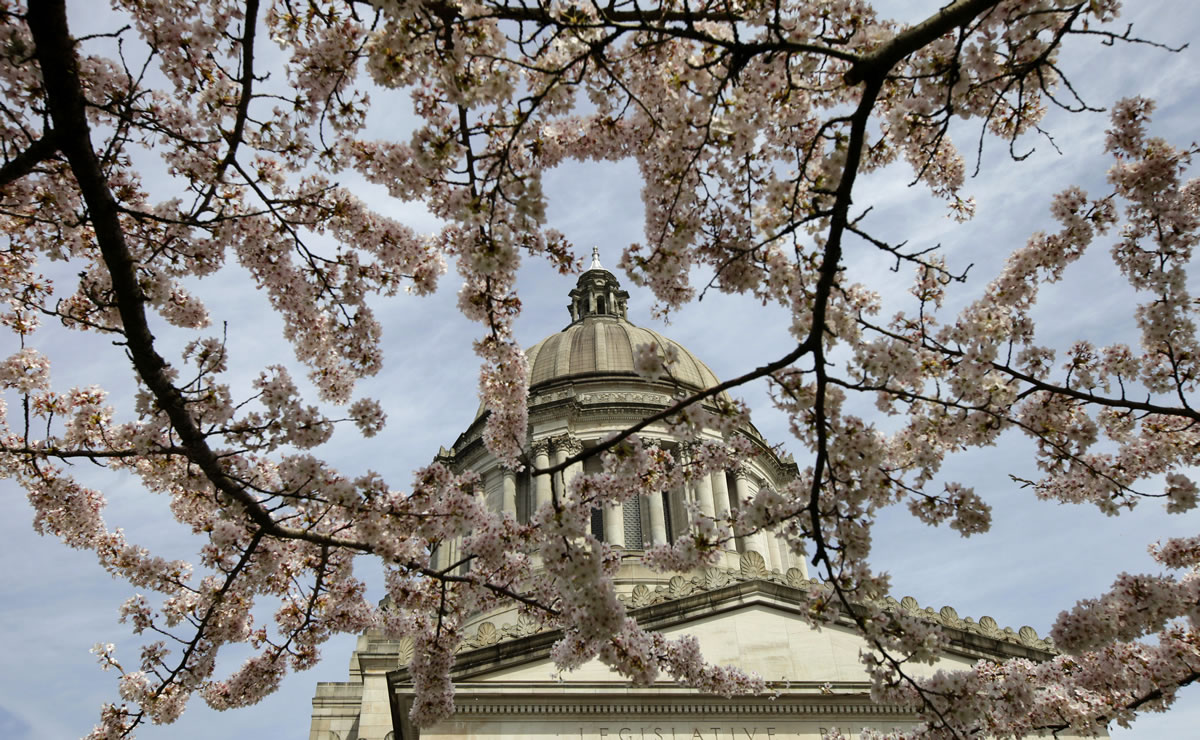TACOMA — The Legislature has to find more money for schools, and there’s growing agreement to do it by dipping into a fund that is supposed to be used to finance water, sewer and street projects.
Lawmakers are targeting the Public Works Assistance Account that makes low-interest loans to cities, counties and other local governments.
The particulars still are in dispute as budget talks at the Capitol drag on. Depending on what’s decided, even loans that already have been promised could be pulled back – including those meant to help expand a Gig Harbor sewage-treatment plant, improve water mains in Belfair and build a new levee to block floodwaters in Orting.
It’s an “ugly choice,” said Rep. Hans Dunshee, a Snohomish Democrat and champion of public works projects who nevertheless says education and human services are more crucial than helping local governments that can find other financing. He expects an outcry from mayors and other local leaders.
“I can guarantee you they’ll say, ‘This could be the next Skagit River bridge,'” he said.
The public works funding list is light on bridge projects, but the span on Interstate 5 that fell into the Skagit River last month hangs over any talk of infrastructure.
A recent report by engineers that gave Washington’s overall infrastructure a C grade also cautioned against grabbing money from the public works account, which has made more than 2,000 loans since its start in 1985.
It now takes in about $45 million a year from taxes on utilities and property sales – but it also receives more than $100 million a year in loan repayments, and Republican budget writers who hold sway in the Senate argue the fund can live off the money being returned.
They want to permanently dedicate most of the taxes that feed the fund to public schools instead, “where it’s desperately needed,” said Sen. Bruce Dammeier, R-Puyallup. The Legislature is trying to fulfill a state Supreme Court order to provide dependable school funding. That would leave the public works fund growing at about the same rate as the general fund, Dammeier said.
It will mean fewer projects, supporters of the fund say.
“The capital needs of the state are substantial, and there’s just no question about that. We can’t ignore those. We are one of the fastest-growing states in the country,” State Treasurer Jim McIntire said.
McIntire and other Democrats say if money must be taken from the fund, it should be temporary. The latest proposal from the Democrat-controlled House would grab money just for the coming two-year budget cycle.
But the House plan would completely drain the account. The $394 million grab would leave no obvious way to make 58 loans lawmakers authorized last year.
“I think that’s wrong,” said Sen. Jim Honeyford, Republicans’ capital budget point man from Sunnyside. “As I understand, there’s no plan to cover these that are under contract.”
Dunshee, the capital budget chairman in the House, argued that is the price budget writers must pay if Republicans’ “intransigence” on taxes prevails. Democrats abandoned much of their tax proposal last week as a compromise offer to the Senate controlled by Republicans and two breakaway Democrats. Republicans have agreed to raise some tax revenue, but only if a series of bills they see as reforms are passed.
The infrastructure report by the Seattle chapter of the American Society of Civil Engineers says Washington’s array of grant and loan programs for infrastructure has helped keep water rates affordable.
But federal financing programs also are available for water and sewer projects. The Senate wants to push cities and counties toward those alternatives, which carry higher interest rates, said Honeyford, who reluctantly backs the plan.
Higher interest rates could mean higher costs for rate payers, say officials with:
o Tacoma Water, which along with other utilities is seeking loans to help with the ongoing construction of a filtration plant on the Green River.
o Pierce County, which wants a loan to provide a fraction of the financing for expansion of its treatment plant on Chambers Creek – the largest infrastructure project in the county’s history, County Executive Pat McCarthy said.
o Gig Harbor, which is expanding its treatment plant to avoid resuming a halt on new sewer hookups.
Gig Harbor also is seeking loans to rebuild 38th Avenue, adding sidewalks and curbs on that street where kids walk to Harbor Heights Elementary and Goodman Middle schools, city public works director Jeff Langhelm said.
Orting hopes to hold on to its loan and cobble it together with state and county grants it has received or is seeking to build a setback levee to replace a stretch of existing levee and allow the Puyallup River to spread out. It would reduce flood risk and improve fish habitat, Orting City Administrator Mark Bethune said.
The engineers wrote that larger water systems, such as Tacoma’s, are in good shape but that some smaller systems lack adequate capacity. They cited the town of Vader in Lewis County, where residents had to boil their water after a 2011 water-main break.
Kathryn Gardow, the vice chairwoman of the public works board, helped author the report as a member of the engineers’ group.
Infrastructure, Gardow said, “doesn’t get much respect. So it falls apart, and you go, how come you didn’t fix it?”



